Gambellara Lessini Durello Spumante Brut 2023
12 bottles with free shipping for: $192.00
| BUY MORE! SAVE MORE! | ||||||||||||||||
|
| Country: | Italy |
| Regions: | Veneto Soave |
| Winery: | Cantina di Gambellara |
| Grape Type: | Durella |
| Vintage: | 2023 |
| Bottle Size: | 750 ml |
Gambellara Lessini Durello Spumante Brute is 100% Durella.
Color: Soft and bright straw yellow
Bouquet: A citrus fresh fruit bouquet
Taste: Slightly acid, fresh, with green apple hints
Perlage: A fine and persistent perlage
The grapes are collected and transported to the winery in small trailers to prevent the grapes from being squashed, then follows immediate separation of the skins from the stalks purifying of the must and long fermentation at 18 °C.
This is a Charmat method (The secondary fermentation didn't take place in the bottle, but in a vat, which makes it slightly different than the Champenoise method used in Champagne).
To serve with seafood starters, soups, egg dishes, shellfish, seafood and white meat. Very good as aperitif. The perfect match is with the "Baccalà alla Vicentina", the traditional dish of our land.
The Cantina di Gambellara Estate
Cantina di Gambellara was founded in 1947 by a group of 26 vine growers and it was the first cooperative winery started in the Vicenza Province.
At the beginning the harvest was made by only a few thousands of grapes but year by year it has increased very quickly thanks to a continuous extension of the vineyards and the rising number of the partners.
For this reason it was necessary to enlarge the winery and the storage capacity.
The Cantina di Gambellara Vineyard
Cantina di Gambellara vineyards are located in the center of the most important areas for the DOC wine production such as Soave, Gambellara, Colli Berici and Lessini Durello and Prosecco.
Cantina di Gambellara has a storage capacity of 160,000 hl of wine and an average harvest of 130,000 quintal of grapes. We have 365 members growing around 650 hectares of vineyards.
Color: Soft and bright straw yellow
Bouquet: A citrus fresh fruit bouquet
Taste: Slightly acid, fresh, with green apple hints
Perlage: A fine and persistent perlage
The grapes are collected and transported to the winery in small trailers to prevent the grapes from being squashed, then follows immediate separation of the skins from the stalks purifying of the must and long fermentation at 18 °C.
This is a Charmat method (The secondary fermentation didn't take place in the bottle, but in a vat, which makes it slightly different than the Champenoise method used in Champagne).
To serve with seafood starters, soups, egg dishes, shellfish, seafood and white meat. Very good as aperitif. The perfect match is with the "Baccalà alla Vicentina", the traditional dish of our land.
Review:
This Brut-style fizz with 10g/L residual sugar is made from the ancient Durella grape in the same way as Prosecco, where the second fermentation is in tank, not the bottle. It shows ripe, exotic flavours, a crisp apple bite and a mineral finish. An unusual and appealing aperitif. - Tina Gellie" - Decanter (January 2019), 90 pts"
Charles Heidsieck Vintage Brut is made from 57% Pinot Noir, 43% Chardonnay.
A beautiful golden robe offers glints of green accentuated by a delicate, dynamic effervescence. The initial nose introduces intense toasted and smoky notes along with ripe fruit. When swirled in the glass, the nose takes on a heartier dimension with touches of apricot and vineyard peaches. The aromatic concentration, due to a heat wave of several weeks, is reminiscent of the summer sun. The attack is taut and decisive. the creamy texture, the crisp fruitiness and spiced notes of cinnamon, licorice and pepper are the hallmark of the House style.
Review:
Aged for eight years on the lees before disgorgement, the Champagne is deliciously toasty with acidity and fine dryness.
-Wine Enthusiast 96 Points
Disgorged in January of 2023, the 2013 Champagne Millésime Brut was the last vintage from the cellar master for Heidsieck prior to Cyril Brun. The 2013 Champagne Millésime Brut is a bright straw yellow color and is based on the crus of Les Mesnil, Avize, Averney, and Aÿ. It’s fresh with aromas of wet stones, fresh quince, and fresh jasmine flowers. It has a chalky and focused texture, with ripeness to balance it out, and a long, graceful finish. At this stage, it feels more forward with 57% Pinot Noir and the rest Chardonnay. A more mineral-tinged expression, it has a lot of charm and the promise of longevity over the coming two decades. Drink 2024-2044. It will be interesting to see how the Pinot shows itself over time. 8 grams per liter dosage.
-Jeb Dunnuck 95 Points
Sylvestra wines show typicity, varietal power and careful elaboration from the Bressia family with the character, freshness and rebelliousness of the new generation. Fruity aromas, floral memories and authentic flavors - here is the expression of Sylvestra, with no oak, just fruit.
A very elegant sparkling wine, with red rose and cherry aromas. The wine was fermented in bottle sur lie for 10 months, yielding a more expressive wine with finer texture and bubbles.
This 100% Chardonnay blend is made from Tête de Cuvée, or first pressing of the grapes, considered superior in quality, with a high percentage of reserve wines for extra complexity, depth and richness, and a low added dosage to preserve purity and freshness.
Alain de la Treille Symphonie Cremant de Loire Brut is made from 90% Chenin Blanc and 10% Orbois (also known as Arbois or Menu Pineau)
The wines of Alain de la Treille reflect their vineyard of origin and are produced following the estate's unique guidelines: a strict selection of terroirs and vines, elaboration according to the traditional method and long maturation “sur lattes” in order to obtain the purest and most elegant expression of the Loire terroirs.
Elegant pale yellow color. The nose is delicate and complex with an array of fruity aromas such as grapefruit and peach with a touch of brioche. The flavors are fresh with floral character and a fresh finish.
Ideal for the aperitif, with a nice seafood platter or simply your favorite dessert.
Alexandre M Vouvray Brut Methode Traditionnelle is made from 100% Chenin Blanc.
Tasting: Nose lime tree flower and brioche.
Mouth: complex and very expressive, so fresh and balanced with a smooth touch in mouth, bubbles so small who just tease the tang, light and good length.
ZERO DOSAGE !
Aperitif, seafood, oysters, light hard sheeses, and just for fun
- back
Alejandro Bulgheroni Lithology Beckstoffer To Kalon Vineyard Cabernet Sauvignon is made from 100 percent Cabernet Sauvignon.
Alejandro Bulgheroni Estate Lithology is a series of single vineyard and AVA-designated wines made from select sites within Napa Valley. Lithology Beckstoffer To Kalon Vineyard is produced solely from fruit grown in the historic Beckstoffer to Kalon Vineyard planted in 1865 by W.H. Crabb and represents Oakville's famous bench land.
Review:
The 2019 Cabernet Franc Lithology Beckstoffer To Kalon Vineyard just shines for its bouquet, which is classic To Kalon with its floral, incense, spicy, red and black-fruited aromatics. These all flow to a medium to full-bodied, utterly seamless Cabernet Franc that’s balanced, has laser-like precision, and a great finish. This isn’t the biggest or richest wine in the lineup, but it’s Cabernet Franc in all its glory, with soaring aromatics and complexity, ample richness and texture, and a beautiful sense of finesse and elegance. It’s going to keep for 15-20 years with no issues.
-Jeb Dunnuck 98 Points
Composed of 90% Cabernet Sauvignon and 10% Cabernet Franc, the 2019 Lithology Cabernet Sauvignon Beckstoffer To Kalon Vineyard is a barrel sample with a deep garnet-purple color. It needs a fair bit of coaxing to unlock scents of blackberry pie, warm blueberries and cassis plus suggestions of spice cake, underbrush, candied violets and chocolate box. The full-bodied palate brings forth loads of earthy layers to accent the rich, black fruits, framed by plush tannins and lovely freshness, finishing long and fragrant.
-Wine Advocate 97 to 99 points
The 2019 Cabernet Sauvignon Lithology Beckstoffer To Kalon Vineyard is one of the very finest wines I have tasted from Alejandro Bulgheroni's Napa Valley project. The 2019 To Kalon captures all the pedigree of this iconic Oakville vineyard, and yet also remains nuanced and wonderfully finessed for an intense wine. To Kalon Cabernets are rarely this elegant, but the Bulgheroni 2019 sure is.
-- Antonio Galloni 97 Points
Clos Saint-Jean is a 41-hectare estate in Châteauneuf-du-Pape run by brothers Vincent and Pascal Maurel. Considered by many critics and wine-writers as the preeminent estate espousing the modern style of winemaking in Châteauneuf, this cellar is one of the oldest in the region, having been founded in 1900 by the greatgreat-grandfather of Vincent and Pascal, Edmund Tacussel. A short time after its founding and well before the AOP of Chateauneuf-du-Pape was created in 1923, Edmund began bottling estate wines in 1910.
The farming at Clos Saint-Jean is fully sustainable due to the warm and dry climate, which prevents the need for chemical inputs. Instead, Vincent and Pascal employ organic methods for pest control, mainly pheromones, to prevent pests from taking up residence in their vines, a process called amusingly enough in French, confusion sexuelle. The vines tended manually, and harvest is conducted in several passes entirely by hand.
Combe des Fous literally means, the hill of the fool. The hill, in this case, is located in the far southern reach of Le Crau which was left barren for many centuries because the layer of galets was so exceedingly deep that everyone assumed vines could never survive there. The fool in this situation is Edmund Tacussel, the great-great-grandfather of Vincent and Pascal Maruel who planted a Grenache vineyard on this site in 1905. That old-vine Grenache form the heart of this cuvée with a small amount of Syrah, Cinsault and Vaccarèse. La Combe des Fous is only made in the best vintages.
Review:
This has good concentration and energy to the dense core of dark fruit and bitter cherry, with great poise and elegance despite its ripeness (an impressive feat for the vintage). Guided by finely crushed mineral accents and tannins, this reveals pretty high-toned floral notes and leafy tobacco. Grenache, Syrah, Mourvedre, Cinsault, Vaccarese and Muscardin. Drink now through 2032. 900 cases made.
-Wine Spectator 95 Points



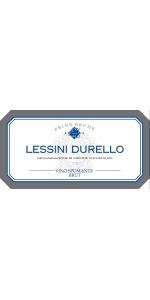
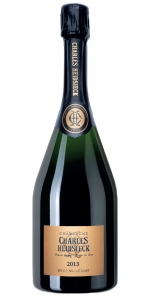
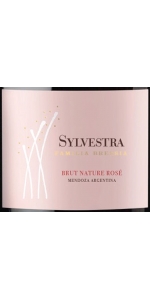
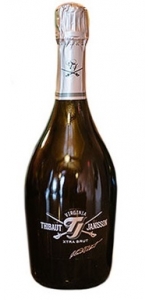
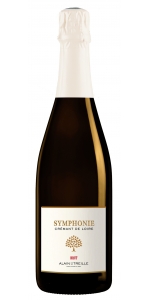
-150x300.jpg)



